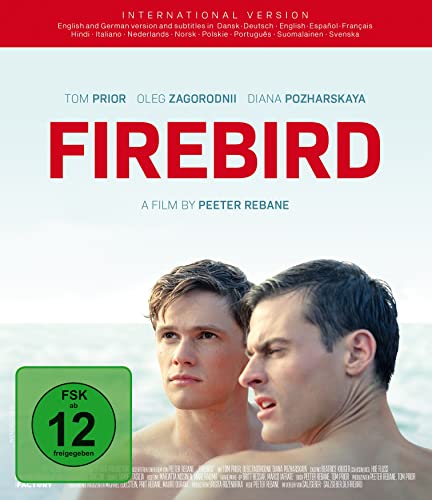![The Russia House [1990]](/pictures/1019843.jpg) The Russia House | DVD | (29/04/2002)
from £6.99
| Saving you £6.00 (85.84%)
| RRP
The Russia House | DVD | (29/04/2002)
from £6.99
| Saving you £6.00 (85.84%)
| RRP Intelligent casting, strong performances and the persuasive chemistry between Sean Connery and Michelle Pfeiffer prove the virtues in director Fred Schepisi's well-intended but problematic screen realization of this John Le Carré espionage thriller. At its best, The Russia House depicts the bittersweet nuances of the pivotal affair between a weary, alcoholic London publisher (Connery) and the mysterious Russian beauty (Pfeiffer) who sends him a fateful manuscript exposing the weaknesses beneath Soviet defence technology. Connery's Barley is a gritty, all-too-human figure who's palpably revived by his awakening feelings for Pfeiffer's wan, vulnerable Katya, whose own reciprocal emotions are equally convincing. Together, they weave a poignant romantic duet. The problems, meanwhile, emanate from the story line that brings these opposites together. Le Carré's novels are absorbing but typically internal odysseys that seldom offer the level of straightforward action or simple arcs of plot that the big screen thrives on. For The Russia House, written as glasnost eclipsed the cold war's overt rivalries, Le Carré means to measure how old adversaries must calibrate their battle to a more subtle, subdued match of wits. Barley himself becomes enmeshed in the mystery of the manuscript because British intelligence chooses to use him as cat's paw rather than become directly involved. Such subtlety may be a more realistic take on the spy games of the recent past but it makes for an often tedious, talky alternative to taut heroics that Connery codified in his most celebrated early espionage role. If the suspense thus suffers, we're still left with an affecting love story, as well as some convincing sniping between British and US intelligence operatives, beautifully cast with James Fox, Roy Scheider and John Mahoney. Veteran playwright Tom Stoppard brings considerable style to the dialogue, without solving the problem of giving us more than those verbal exchanges to sustain dramatic interest. --Sam Sutherland
![The Eichmann Show (BBC) [DVD]](/pictures/1135249.jpg) The Eichmann Show (BBC) | DVD | (27/04/2015)
from £9.69
| Saving you £10.30 (106.30%)
| RRP
The Eichmann Show (BBC) | DVD | (27/04/2015)
from £9.69
| Saving you £10.30 (106.30%)
| RRP The behind-the-scenes true life story of ground-breaking producer Milton Fruchtman and blacklisted TV director Leo Hurwitz, who, overcoming enormous obstacles, set out to capture the testimony of one of the war's most notorious Nazis, Adolf Eichmann. He is accused of executing the 'final solution' and organising the murder of six million Jews. This is the extraordinary story of how Eichmann's trial came to be televised and the team that made it happen. Filmed at the trial in Jerusalem in 1961, the production became the world's first ever global TV documentary series, where, for the first time, the horror of the camps was heard directly from the mouths of its victims. It was edited daily and broadcast in Germany, America, Israel and 34 other countries. People fainted when they saw it on TV. Never before had there been such drama in the use of cameras, their positioning or the revolutionary effect of operators being able to adjust frame and position to match subject and content.
![Mad Cows [1999]](/pictures/1016282.jpg) Mad Cows | DVD | (08/05/2000)
from £5.49
| Saving you £14.50 (264.12%)
| RRP
Mad Cows | DVD | (08/05/2000)
from £5.49
| Saving you £14.50 (264.12%)
| RRP Based on the best-selling novel, this adaptation about an Australian who has a baby with her aristocratic cad of a boyfriend is written and directed by newcomer Sara Suggarman, who has injected her own particular style into the film.
![The Eichmann Show (BBC) [Blu-ray]](/pictures/1135337.jpg) The Eichmann Show (BBC) | Blu Ray | (27/04/2015)
from £8.98
| Saving you £11.01 (122.61%)
| RRP
The Eichmann Show (BBC) | Blu Ray | (27/04/2015)
from £8.98
| Saving you £11.01 (122.61%)
| RRP The behind-the-scenes true life story of ground-breaking producer Milton Fruchtman and blacklisted TV director Leo Hurwitz, who, overcoming enormous obstacles, set out to capture the testimony of one of the war's most notorious Nazis, Adolf Eichmann. He is accused of executing the 'final solution' and organising the murder of six million Jews. This is the extraordinary story of how Eichmann's trial came to be televised and the team that made it happen. Filmed at the trial in Jerusalem in 1961, the production became the world's first ever global TV documentary series, where, for the first time, the horror of the camps was heard directly from the mouths of its victims. It was edited daily and broadcast in Germany, America, Israel and 34 other countries. People fainted when they saw it on TV. Never before had there been such drama in the use of cameras, their positioning or the revolutionary effect of operators being able to adjust frame and position to match subject and content.
 Firebird (Blu-ray) | Blu Ray | (02/09/2022)
from £N/A
| Saving you £N/A (N/A%)
| RRP
Firebird (Blu-ray) | Blu Ray | (02/09/2022)
from £N/A
| Saving you £N/A (N/A%)
| RRP 
Please wait. Loading...
This site uses cookies.
More details in our privacy policy